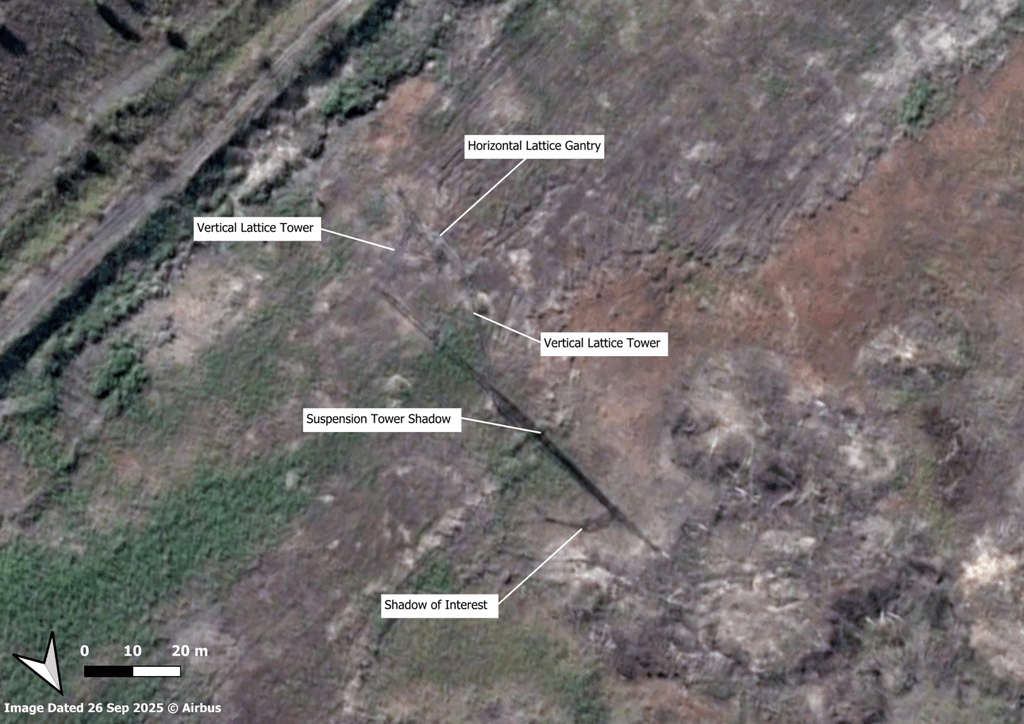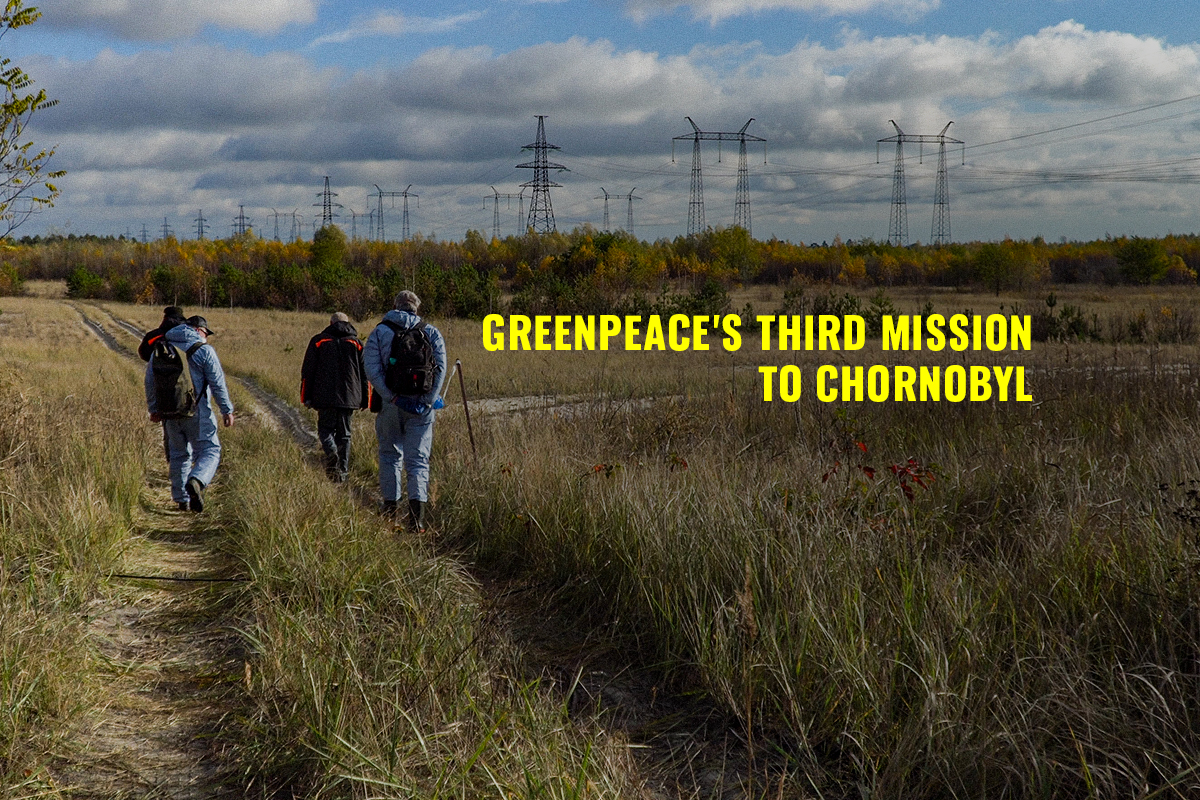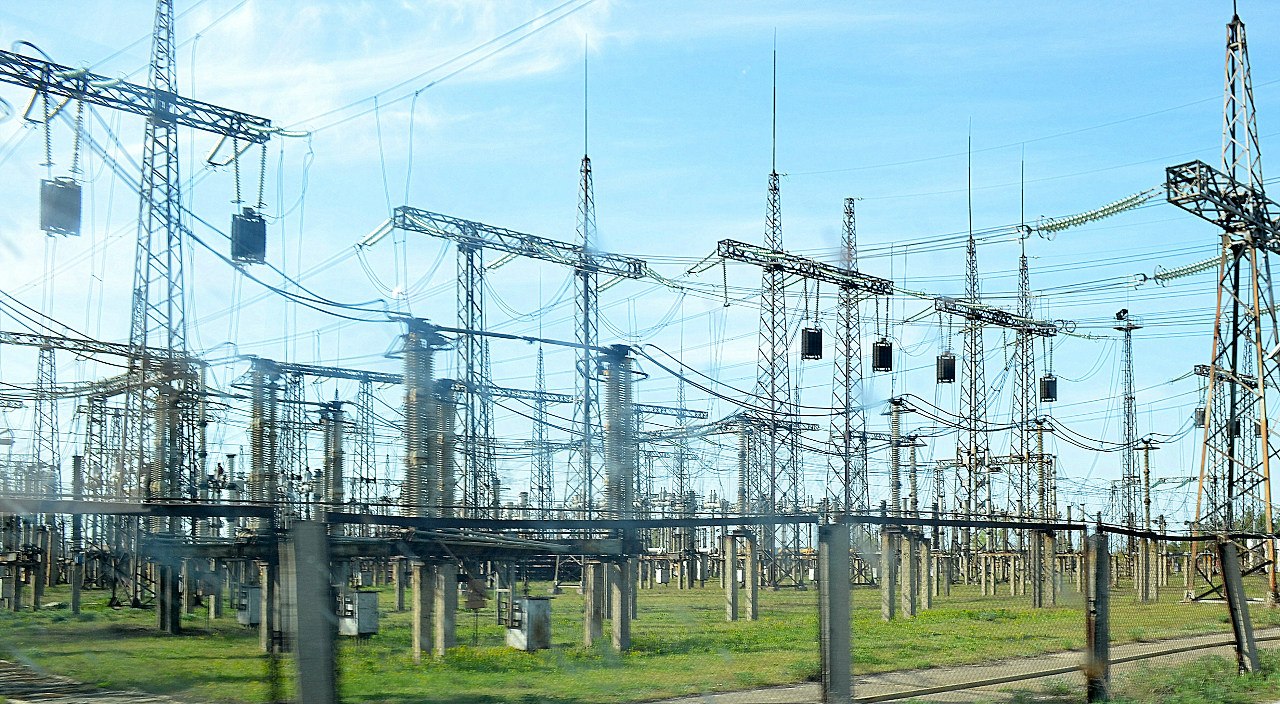There is no evidence of any military strikes in the area surrounding the pylons and network of power lines in this part of Zaporizhzhia nuclear power plant. The investigation by Greenpeace Ukraine is conclusive new evidence that the electric power loss at the Zaporizhzhia Nuclear Power Plant (ZNPP) is a deliberate act of sabotage by Russia. The aim is to permanently disconnect the plant from the Ukraine grid and connect the nuclear plant to the grid occupied by Russia.

1 October 2025, Kyiv…Former military remote sensing experts at McKenzie Intelligence Services (MIS) have reviewed high resolution satellite imagery from 26 September 2025 supplied by Greenpeace Ukraine. In their report (1), MIS show that there has been no shelling or attacks at the location of the 750 kV transmission tower. It is exposing Russia’s false claims that the loss of external power at ZNPP is due to Ukraine military attacks. McKenzie concludes that if there is any damage to the line at all, it is minimal and could be easily repaired.
“Satellite imagery shows that Russia has deliberately sabotaged the external power line in an attempt to connect to the electric grid in the temporarily occupied territories of Ukraine. Russian disinformation and false claims of the cause of the damage have been exposed. Overall, the current loss of power at the Zaporizhzhya Nuclear Power Plant is a deliberate act from the Russian side. A few months before, occupiers informed the IAEA that they have a plan to connect to the grid under Russian occupation if there is a loss of external power – they have sabotaged the critical line and thus created those conditions. Russia’s total disregard for nuclear safety and security must be called out and challenged by IAEA Director Grossi and the Zaporizhzhia nuclear plant must be reconnected to the Ukraine controlled grid immediately. Failure to call out and stop Russia will only lead to further escalation of the nuclear threat at the plant”, – says Shaun Burnie nuclear specialist Greenpeace Ukraine.
McKenzie assessed the area at the ‘damaged’ transmission tower which is located 1.9km to the northeast of the boundary at reactor unit 6 at ZNPP. McKenzie conclude that:
- The vertical 750kV lattice towers remain in position and upright. It also appears to confirm that the horizontal gantry is still in place connecting the two vertical towers;
- There is some uncertainty over a shadow in the image;
- The suspension tower remains in situ. It is still standing and therefore it should be a relatively simple task to repair;
- There is no evidence of any crater, either fresh or historic in the area surrounding the pylons and network of power lines in this part of the plant.
- The Ukrainian policy is not to conduct military strikes on nuclear power plants, which further undermines the claim that it is too dangerous to conduct repairs to the suspension tower;
And finally, McKenzie concluded,
“An analysis of the wider area does not support claims of incoming shelling of the area.”
The MIS analysis supports Greenpeace Ukraine analysis published last week that the loss of external power to the 750kV transmission line was not a result of Ukraine targeting and shelling of the area. And, that if there is any limited damage to the transmission line at all, it is the result of targeted Russian sabotage and can be repaired in a short period of time.
Russian plan to connect to occupied grid and ZNPP restart reactor
Further evidence of Russia’s illegal actions at ZNPP are revealed in a Russian government communique to IAEA member states on 2 June 2025. The Note Verbale from the Permanent Mission of the Russian Federation, (INFCIRC 1295) says that,
“In the case of a complete loss of power supply, (a) “Procedure for voltage transmission to the own needs of a ZNPP from the unified power system of Russia in conditions of disconnected 750kV “ZNPP Dneprovskaya” HVL and 330kV “L-243 – Ferrosplavnaya-1” HVL, has been developed.”1
It is clear, according to the Russian government, that as of June 2025, Russia had a plan to use the loss of the 750kV Dniprovska line to connect ZNPP to the occupied grid. Three months later, the ZNPP was disconnected from the 750kV Dniprovska line. In its recent analysis Greenpeace Ukraine documented Russian construction of new power lines and developments at the ZNPP cooling pond that could provide sufficient water for the restart of one reactor at reduced power.
“Since 2022, Russia has used its occupation of the Zaporizhzhia nuclear plant as a tactical and strategic weapon against Ukraine and Europe. By sabotaging the last remaining electricity line to the plant, they deliberately create a crisis, in order to use the threat of a nuclear disaster to gain leverage and influence. They must be challenged and stopped. There can be no future for Russia’s illegal occupation of the ZNPP. IAEA Director Grossi must declare that Russian plans for restarting any reactor have no possibility and the only way to remove the safety and security threat to the plant is to end the Russian occupation,” said Jan Vande Putte, radiation and nuclear expert at Greenpeace Ukraine.
—-
Notes
1 – McKenzie Intelligence Services, Zaporizhzhia Nuclear Power Plant (ZNPP) External Electricity Grid Loss, 30 September 2025, Commissioned by Greenpeace Ukraine: https://drive.google.com/file/d/1L32Ppj7qdnE1JO-XqkIyxvrUT4sguYF3/view
2 – IAEA, Communication from the Permanent Mission of the Russian Federation to the Agency, INFCIRC 295, 3 June 2025, see www.iaea.org/sites/default/files/publications/documents/infcircs/2025/infcirc1295.pdf
3 – The Zaporizhzhia Nuclear Cliff Edge: Russia And Rosatom Escalates Crisis, Greenpeace Ukraine Analysis Of New Russian Grid Line, Cooling Water Supply, Loss Of Offsite Power And Early Reactor Restart September 26 2025, see https://drive.google.com/file/d/1yLgDuPl8E9EF38tQmaXjJCQm9aI3oyXc/view



